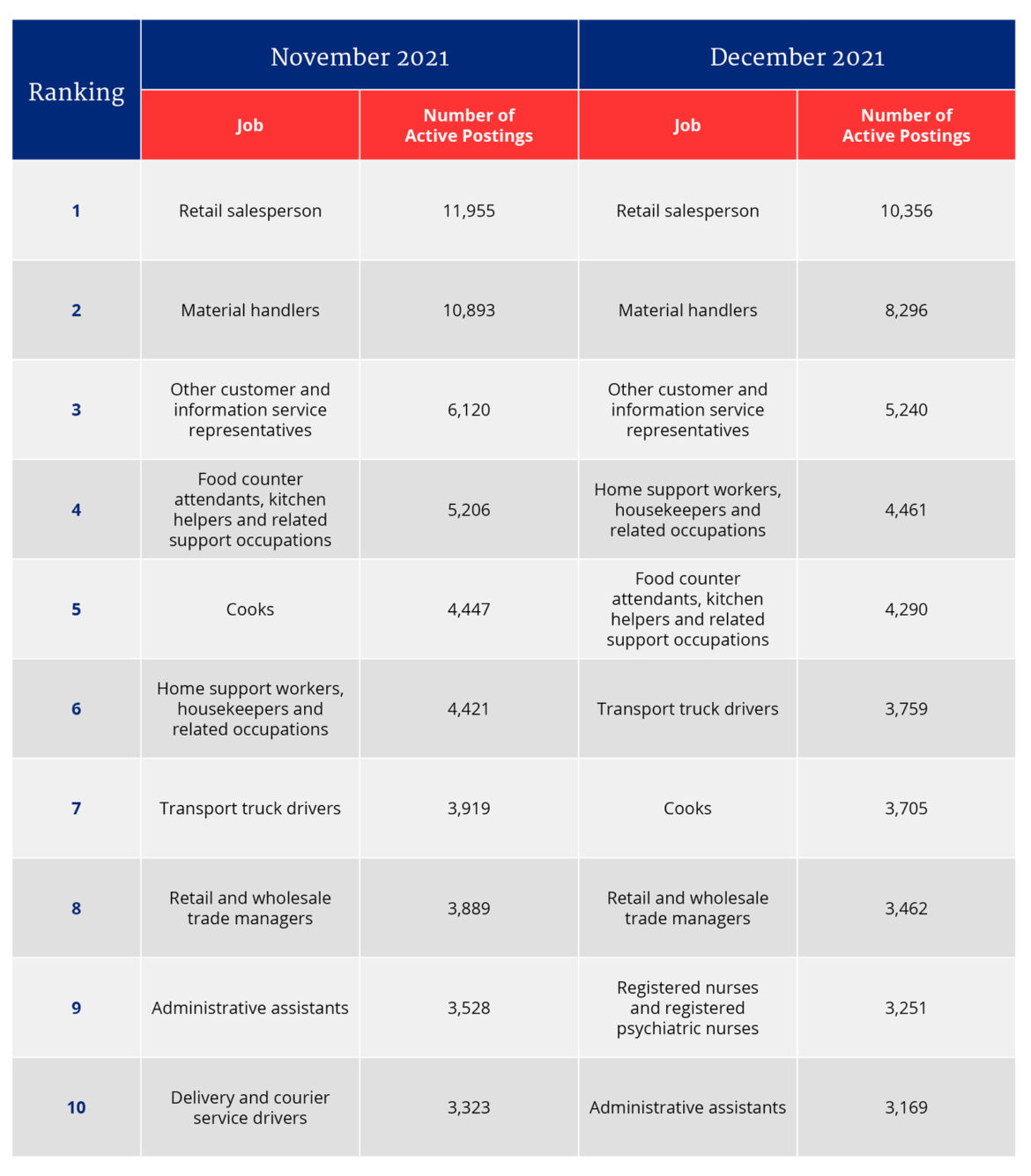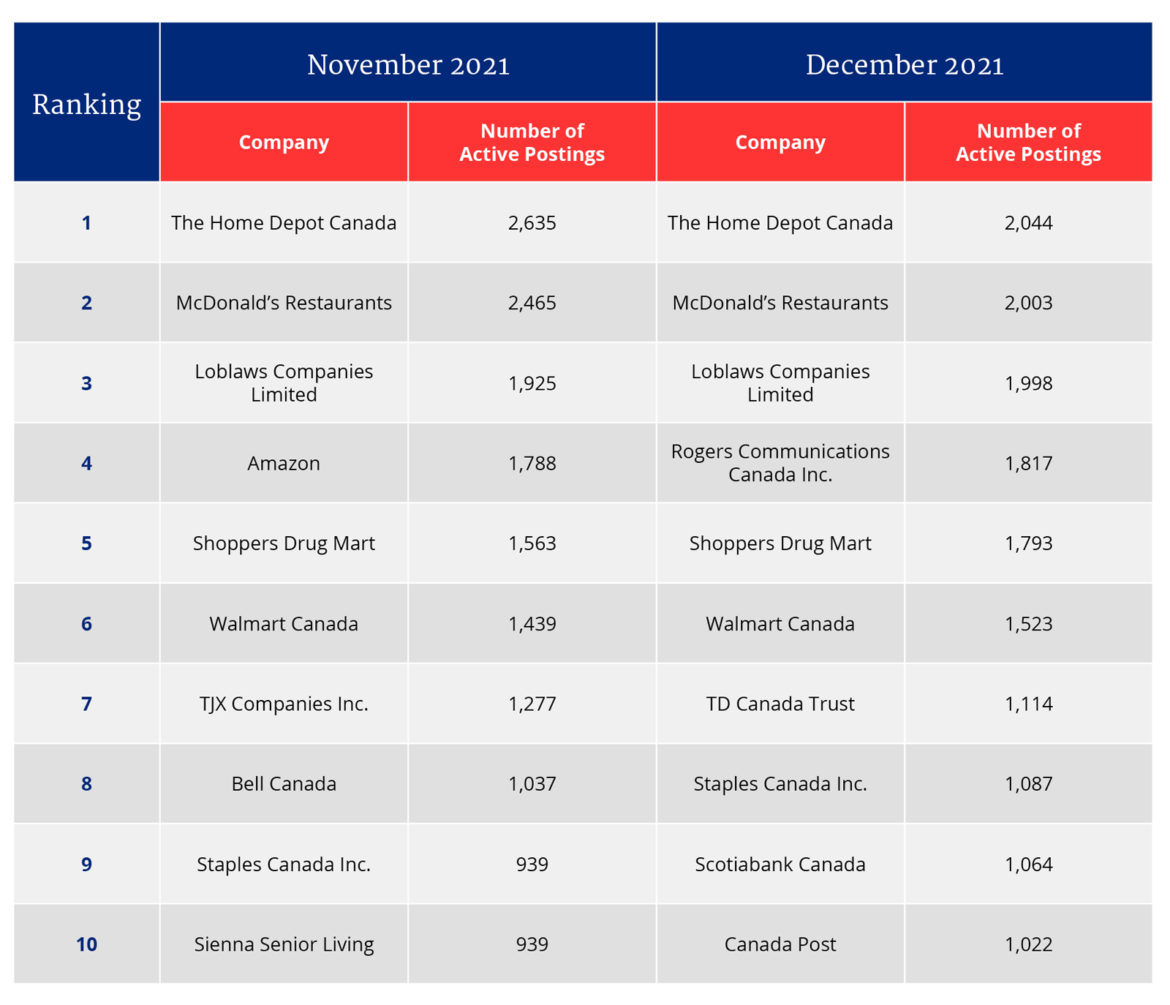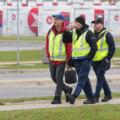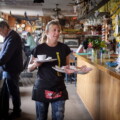As we move beyond the end-of-year holiday hiring spree, job postings are down and employment is up. How much of these numbers can be attributed to the COVID-19 pandemic’s ongoing influence on employment and the workforce? How do we compare at the start of 2022 relative to where we were prior to the pandemic?
This month’s Labour Markets Insights attempts to shed some light on these questions. Our analysis is focused on where in-demand jobs and the employment numbers intersect. This analysis draws from Workforce WindsorEssex’s unique data source which covers job postings from across the province (excluding the City of Toronto and the far northeastern region).
The 10 most in-demand occupations in December 2021 compared to the previous month were as follows:

The top-10 in-demand occupations constituted just under one-third of all job postings (49,989 job postings or 30.7 percent) in the regions. The number of active job postings decreased by 19,415 in December relative to November for a total of 162,852, compared to 182,267 active job postings in November. This was a decrease of 10.7 percent across the regions between the two final months of 2021.
The occupational field of Home Support Workers, Housekeepers and Related Occupations appears higher on December’s list, although it saw just a one percent increase in postings from 4,421 total active job postings in November to 4,461 in December. Home Support Workers provide personal care and companionship for seniors, persons with disabilities, and convalescent clients and are employed by home care and support agencies, private households, or they may be self-employed.
Registered Nurses and Registered Psychiatric Nurses jumped from the 12th-most in-demand occupation for November with 2,709 total active job postings to the 9th in December with 3,251 total active job postings. This amounted to a 20-percent increase month-over-month for these positions. This occupation provides direct nursing care to patients, delivers health education programs, and provides consultative services regarding issues relevant to the practice of nursing.
Increases in job postings in these occupational fields can likely be attributed to an increase in the need for more staffing as COVID-19 cases grew in hospitals as well as to cover vacancies from staff unable to go into work due to contracting COVID-19.
Both Food Counter Attendants, Kitchen Helpers and Related Support Occupations and Cooks saw a decrease in job postings in December relative to November (with decreases of 17.6 percent and 16.7 percent, respectively). The decrease in job postings here is likely a result of the Ontario government reinstating some public health measures on December 18. These restrictions included limiting restaurants and bars to 50 percent capacity.
Looking at Statistics Canada’s employment data for the whole of Ontario, the province is now above pre-pandemic employment numbers, with 7.6 million Ontarians employed in total in December 2021. This is up 5.1 percent from 7.2 million in December 2020 when the province was in lockdown, but also up 2 percent from 7.5 million in December 2019 and up 5.2 percent from 7.2 million in December 2018.
The top-10 companies hiring in December 2021 compared to the previous month were as follows:

As noted in last month’s Labour Market Insights, we did see a drop in job postings across Ontario during the month of December, largely because the holiday shopping season concluded and employers typically hold off on the recruitment process for any open positions until after the new year begins. We do see some companies in the Wholesale and Retail Trade sector in the top-10 hiring companies have increased hiring, while some have decreased. Employment in the sector province-wide, however, is above pre-pandemic levels, with 1,147,000 employed in the Wholesale and Retail Trade sector in December 2021. This is up 8.9 percent from 1,053,000 in December 2020, up 4.9 percent from 1,093,500 in December 2019, and up 7.4 percent from 1,068,400 in December 2018.
For more information about Workforce WindsorEssex and their valuable LMI, please visit workforcewindsoressex.com.
Recommended for You

Michael Kaumeyer: Polite decline: Canada’s aversion to being our best is holding us back

‘Nobody cares who your daddy is’: John Whittaker and Rahim Sajan on what makes Alberta attractive to dreamers, strivers, and entrepreneurs

Women’s economic outcomes are improving—but what’s happening with men?

‘We’ll get substance, not slogans’: John Kirton on the stakes at Kananaskis and whether the G7 can deliver



